Modern mobility: Salone drives a new definition of car creativity

There was a time when carmakers came to Milan to observe. A handful of the more advanced designers would visit Salone del Mobile to be inspired by the wider creative community. This, however, is beginning to change, with an increasing number of car manufacturers partaking in the last few years - with mixed results.
Milan acts as a fantastic branding exercise, which is naturally part of the pull. Yet there are certain silent codes when participating here. The Salone is not, for instance, a platform for unveiling a new car and showcasing products and furniture based on the contour of the latest concept perhaps lacks imagination.
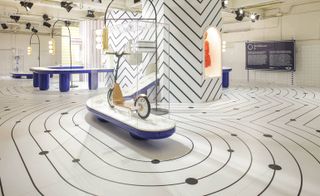
Take a tour of all the auto brands' projects at Salone
Surely with the concentration of creative minds gathered here for the week, Milan should be the ideal platform for discussions on contemporary subjects - namely mobility. These are urgent matters that can benefit greatly by involving original minds from outside the insular auto world.
This year BMW, Mini, Lexus, Mazda, Ford and Hyundai participated in Milan, and what they showed with their choice of collaborations provides an insightful window into their philosophy.
The BMW Group took on the theme of future mobility by engaging non-automotive designers in the dialogue. Spanish artist and designer Jaime Hayon embellished Mini's latest Citysurfer with bold colours and textures displaying the foldable scooter concept in a fictional city of marble roads and oversized road lamps.
Zurich-based designer Alfredo Häberli worked closely with the team at BMW to unravel a range of scenarios that address driving in the future. It was an inspiring study of how we could move from place to place - of our relationship with driving once the car becomes an autonomous object. The display here addresses mobility in a much wider context, taking on the vessel, road structures, architecture and city planning.
Others took on a more linear approach. Ford, for example, exhibited a range of objects inspired by its latest GT concept including a boat, chair, chaise lounge and guitar. Elsewhere, Mazda took on a similar scheme with a different objective allowing the non-car products to interpret the marque's Kodo design philosophy in novel ways. Hyundai, on the other hand, looked at how the finance and art world could connect.
Finally, Lexus offered a highly conceptual installation. This was a journey through the 'cycle of life', via designer Philippe Nigro's latticework cocoons and enhanced by unusual tasters created masterfully by chef Hajime Yoneda. The idea was to excite us, to awaken our senses in order to explore the possibilities of design, making the act of driving a more sensory experience.
Wallpaper* Newsletter
Receive our daily digest of inspiration, escapism and design stories from around the world direct to your inbox
-
 Enjoy ocean and jungle bliss at Bespoke Tulum’s residences in Mexico
Enjoy ocean and jungle bliss at Bespoke Tulum’s residences in MexicoBespoke Tulum is an exclusive hospitality complex designed by Muro Rojo Arquitectura on Mexico’s Caribbean coastline
By Sofia de la Cruz Published
-
 In Van Cleef & Arpels’ high jewellery, the archival meets the au courant
In Van Cleef & Arpels’ high jewellery, the archival meets the au courantVan Cleef & Arpels pays tribute to its rich heritage with a captivating high jewellery collection
By Hannah Silver Published
-
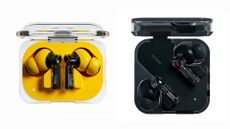 New Nothing Ear and Ear (a) earbuds: audio innovation with a retro nod
New Nothing Ear and Ear (a) earbuds: audio innovation with a retro nodNothing’s new Ear and Ear (a) earbuds, drawing inspiration from vintage portable hi-fi and packed with updates, help the company maintain its status as an audio innovator
By Jonathan Bell Published
-
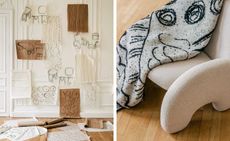 Faye Toogood brings new life to Matisse’s legacy
Faye Toogood brings new life to Matisse’s legacyMilan Design Week 2023: tapped by Maison Matisse, the London-based designer has taken inspiration from the French master’s forms to create a collection of heirloom-worthy objects
By Sam Rogers Published
-
 Prada Frames 2023: Milan programme announced
Prada Frames 2023: Milan programme announcedProgramme announced for Prada Frames 2023 at Milan Design Week, the annual symposium curated by Formafantasma at Luigi Caccia Dominioni's Teatro Filodrammatici from 17 to 19 April
By Rosa Bertoli Last updated
-
 Alessi Occasional Objects: Virgil Abloh’s take on cutlery
Alessi Occasional Objects: Virgil Abloh’s take on cutleryBest Cross Pollination: Alessi's cutlery by the late designer Virgil Abloh, in collaboration with his London studio Alaska Alaska, is awarded at the Wallpaper* Design Awards 2023
By Rosa Bertoli Published
-
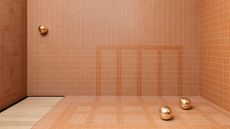 Salone del Mobile 2023: highlights from Milan Design Week
Salone del Mobile 2023: highlights from Milan Design WeekIn pictures: our highlights from Milan Design Week, held during the 61st Salone del Mobile 2023 (18-23 April)
By Rosa Bertoli Last updated
-
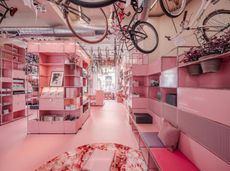 USM launches blushing pink limited edition of its modular furniture
USM launches blushing pink limited edition of its modular furnitureFollowing an installation during Milan Design Week 2022, USM launches a new pink limited edition of its Haller range
By Rosa Bertoli Last updated
-
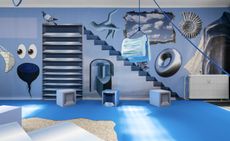 ‘You don't want space; you want to fill it’: Milan exhibition
‘You don't want space; you want to fill it’: Milan exhibitionMaking its debut during Milan Design Week 2022 at Marsèll Paradise, a new exhibition by Matylda Krzykowski, explores how we approach the space we live in (until 15 July 2022)
By Cristina Kiran Piotti Last updated
-
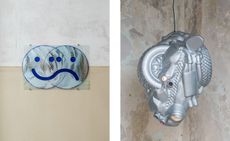 Men’s mental health takes centre stage at an art and design exhibition by Tableau
Men’s mental health takes centre stage at an art and design exhibition by Tableau‘Confessions’, which travels to Copenhagen’s 3 Days of Design following its debut at Milan Design Week 2022, features commissioned work by 14 male artists, designers and architects, reflecting on toxic masculinity, vulnerability and mental health
By TF Chan Last updated
-
 Salone del Mobile 2022: highlights from Milan Design Week
Salone del Mobile 2022: highlights from Milan Design WeekIn pictures: our highlights from Milan Design Week 2022, held during the 60th edition of Salone del Mobile (7 – 12 June 2022)
By Rosa Bertoli Last updated